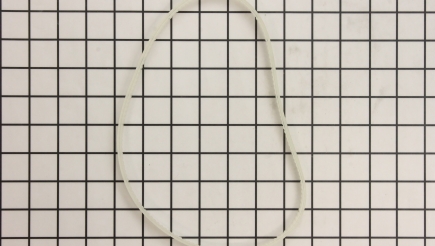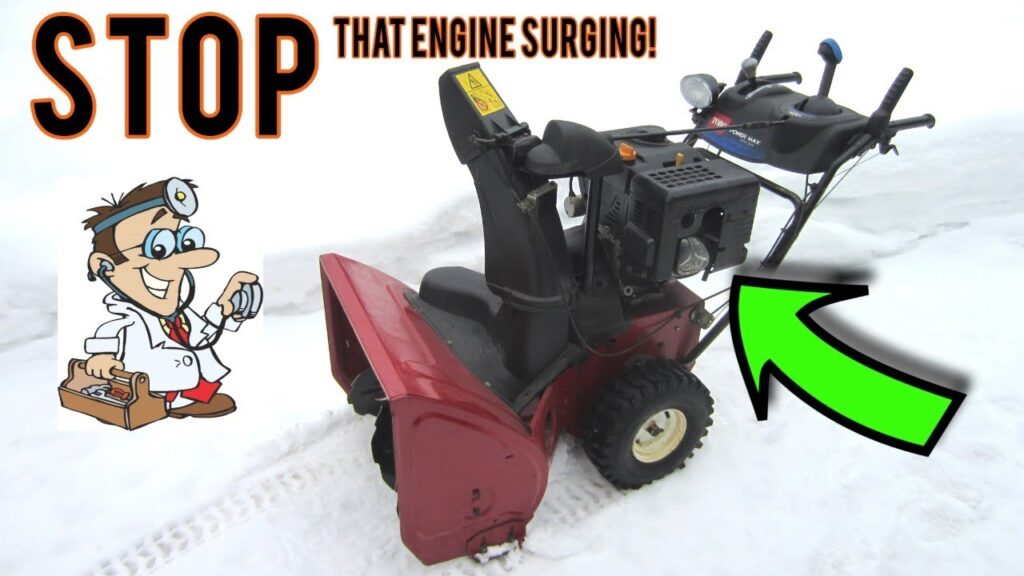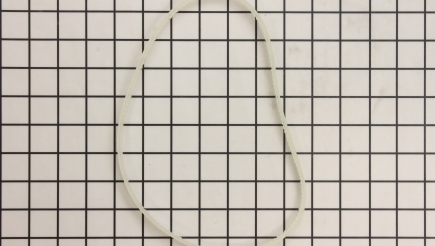So, you’ve fired up your snowblower and suddenly noticed that it’s shaking like crazy. Not exactly the smooth, efficient snow-clearing experience you were hoping for, right? Well, fear not, because in this article, we’ll explore a few simple steps you can take to address that excessive vibration issue and get your snowblower running as smoothly as possible again. Whether it’s a minor adjustment or a more involved repair, we’ve got you covered. So, let’s get to the bottom of this vibrating mystery and tackle it head-on, shall we?

This image is property of www.ereplacementparts.com.
Check the Engine Mounts
Inspect the Engine Mounts for Damage
When your snowblower is vibrating excessively, one of the first things you should check is the engine mounts. Over time, the engine mounts can become worn or damaged, causing the engine to vibrate more than usual. Inspect the engine mounts carefully for any signs of cracks, tears, or other damage. If you notice any issues with the engine mounts, it’s important to replace them as soon as possible to prevent further damage to your snowblower.
Tighten Loose Engine Mounting Bolts
In addition to inspecting the engine mounts for damage, it’s also essential to check the tightness of the engine mounting bolts. Over time, these bolts can become loose due to the continuous vibrations of the snowblower. Grab a wrench or a socket set and carefully tighten any loose engine mounting bolts you come across. However, be cautious not to overtighten, as this can also cause damage. Ensuring that the engine mounts are secure and tightly fastened can significantly reduce excessive vibrations in your snowblower.
Inspect the Belts and Pulleys
Check for Worn or Damaged Belts
Excessive vibration in your snowblower can also be caused by worn or damaged belts. Therefore, it’s vital to inspect the belts for any signs of wear, such as cracks, fraying, or stretching. If you notice any damage to the belts, it’s crucial to replace them promptly to avoid any further issues. Worn-out belts can cause the snowblower’s components to function improperly, resulting in excessive vibrations and potential damage to the machine.
Tighten Loose Belt Tension
Loose belt tension can also contribute to excessive vibrations in your snowblower. Inspect the belt tension carefully and adjust it if necessary. Most snowblowers provide an adjustment mechanism that allows you to tighten or loosen the belt tension. Check your snowblower’s manual for instructions on how to adjust the belt tension properly. By ensuring the belts are properly tensioned, you can diminish vibrations and improve the overall performance of your snowblower.
Inspect and Lubricate Pulleys
While inspecting the belts, it’s a good idea to inspect the pulleys as well. Pulleys can accumulate dirt, debris, and even ice, which may cause the snowblower to vibrate excessively. Clean the pulleys thoroughly and ensure that there are no obstructions. Additionally, lubricate the pulleys as recommended by the snowblower’s manufacturer. Properly maintaining the pulleys will not only reduce vibrations but also extend their lifespan, ensuring smooth operation of your snowblower.

This image is property of www.ereplacementparts.com.
Examine the Auger and Impeller
Inspect the Auger for Damage or Misalignment
The auger is an essential component of your snowblower, responsible for breaking up and propelling the snow. If the auger is damaged or misaligned, it can result in excessive vibrations. Carefully examine the auger for any signs of cracks, chips, or bent blades. If you notice any damage, it’s important to replace the auger before further use to prevent worsening the problem. Additionally, check the alignment of the auger, as misalignment can also lead to increased vibrations in your snowblower.
Check the Impeller for Damage or Clogs
Similar to the auger, the impeller plays a crucial role in moving the snow out of the chute. If the impeller is damaged or clogged, it can disrupt the snowblower’s operation and cause excessive vibrations. Take the time to inspect the impeller for any signs of damage or obstructions. Remove any debris or clogs you find, ensuring that the impeller can rotate freely. By keeping the impeller in good condition, you can minimize vibrations and maintain optimal performance of your snowblower.
Inspect the Shear Pins
Check if Shear Pins are Broken or Missing
Shear pins are designed to protect the snowblower’s auger and engine from damage in case of a sudden impact with a hard object, such as a rock or ice chunk. However, they can break or go missing over time, leading to excessive vibrations. Take a moment to inspect the shear pins and determine if any of them are broken or missing. If you do find a damaged or missing shear pin, replace it immediately to prevent further damage to the auger or engine.
Replace Shear Pins if Necessary
If your inspection reveals broken or missing shear pins, it’s crucial to replace them promptly. Shear pins are relatively inexpensive and easy to replace, making it a simple maintenance task for you to tackle. Refer to your snowblower’s manual for the correct size and type of shear pins to purchase. Once you have the replacement shear pins, carefully install them according to the manufacturer’s instructions. By ensuring that all shear pins are intact, you can minimize vibrations and protect your snowblower from unnecessary damage.

This image is property of i.ytimg.com.
Check for Clogs in the Chute
Remove any Debris or Snow Buildup in the Chute
Another common cause of excessive vibration in a snowblower is clogs in the chute. Clogs can occur when snow or debris becomes stuck, restricting the airflow and causing the snowblower to vibrate. Inspect the chute carefully and remove any debris or snow buildup you find. Use a shovel or a brush to dislodge larger chunks of snow, and make sure that the chute is clear and unobstructed. Regularly clearing the chute will help maintain smooth operation and prevent unnecessary vibrations in your snowblower.
Evaluate the Skid Shoes and Scraper Blade
Inspect the Skid Shoes for Wear
Skid shoes are essential components of a snowblower, as they help provide clearance between the auger blades and the ground. Over time, skid shoes can become worn or damaged, leading to increased vibrations. Take a close look at the skid shoes and check for any signs of wear, such as excessive scraping or uneven surfaces. If you notice significant wear, it’s important to replace the skid shoes to ensure smooth operation and reduce vibrations in your snowblower.
Examine the Scraper Blade for Damage
The scraper blade is responsible for clearing snow from the ground, and if it’s damaged, it can cause excessive vibrations. Carefully examine the scraper blade for any signs of wear, chipping, or bending. Even a small amount of damage can affect the performance of your snowblower and lead to unwanted vibrations. If you notice any issues with the scraper blade, replace it promptly to maintain optimal functionality and minimize vibrations during operation.

This image is property of i.ytimg.com.
Adjust the Auger and Drive Control Cables
Ensure Proper Cable Tension
The auger and drive control cables are vital for controlling the operation of your snowblower. If these cables become damaged or stretched, it can lead to excessive vibrations. Check the tension of both the auger and drive control cables and ensure they are properly adjusted. If you notice any signs of damage or see that the cables are too loose or too tight, it’s essential to make the necessary adjustments. Follow the instructions outlined in your snowblower’s manual to ensure the correct tension and prevent unnecessary vibrations.
Check for Damaged or Stretched Cables
In addition to checking the tension of the cables, it’s important to inspect them for any signs of damage or stretching. Over time, cables can wear out, fray, or become stretched, affecting the performance of your snowblower and causing vibrations. Carefully examine the cables, from the control handles down to the corresponding components, and replace any damaged or stretched cables you find. By maintaining strong and properly functioning cables, you can significantly reduce vibrations and improve the overall operation of your snowblower.
Inspect the Wheels and Axles
Check for Bent or Damaged Wheels
The condition of the wheels on your snowblower can greatly impact the level of vibration during operation. Inspect the wheels carefully and check for any signs of damage, such as bends, cracks, or flat spots. Bent or damaged wheels can cause your snowblower to wobble and vibrate excessively. If you notice any issues with the wheels, replace them promptly to ensure smooth and stable operation, reducing vibrations and improving the overall performance of your snowblower.
Examine the Axles for Misalignment
Misaligned axles can also contribute to excessive vibrations in your snowblower. Take a close look at the axles and determine if they are aligned properly. If you notice any misalignment, use a wrench or adjustable pliers to carefully adjust the axles until they are straight and aligned. It’s essential to ensure that both axles are aligned correctly to prevent unnecessary vibrations and maintain the stability of your snowblower while in use.

This image is property of www.weingartz.com.
Verify the Engine RPM
Adjust the Engine RPM to Specifications
Another crucial aspect to consider when troubleshooting excessive vibrations in your snowblower is the engine’s RPM (revolutions per minute). Low or inconsistent RPM can lead to increased vibrations during operation. Consult your snowblower’s manual to determine the recommended engine RPM for optimal performance. Using a tachometer, adjust the engine RPM to meet the manufacturer’s specifications. By ensuring that the engine RPM is appropriately set, you can reduce vibrations and ensure smooth operation of your snowblower.
Seek Professional Assistance
Contact a Certified Technician if the Problem Persists
If you’ve followed all the previous steps and are still experiencing excessive vibrations in your snowblower, it may be time to seek professional assistance. Certified technicians have the expertise and knowledge to diagnose and resolve complex issues that may be causing excessive vibrations in your snowblower. Contact the manufacturer or a trusted repair service and explain the problem you’re facing. They will guide you through potential solutions or schedule a repair appointment if necessary. Remember, it’s essential to address the issue promptly to prevent further damage and maintain the optimal performance of your snowblower.
